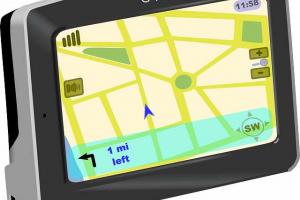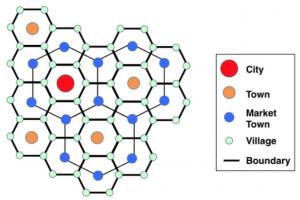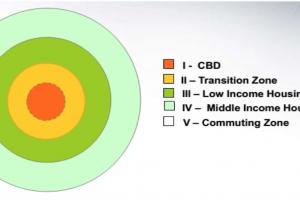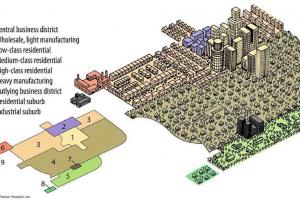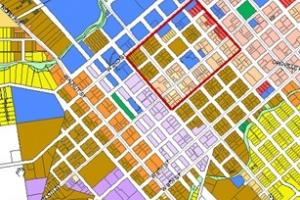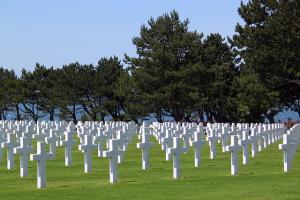Multiple Nuclei Model in Urban and Regional Planning
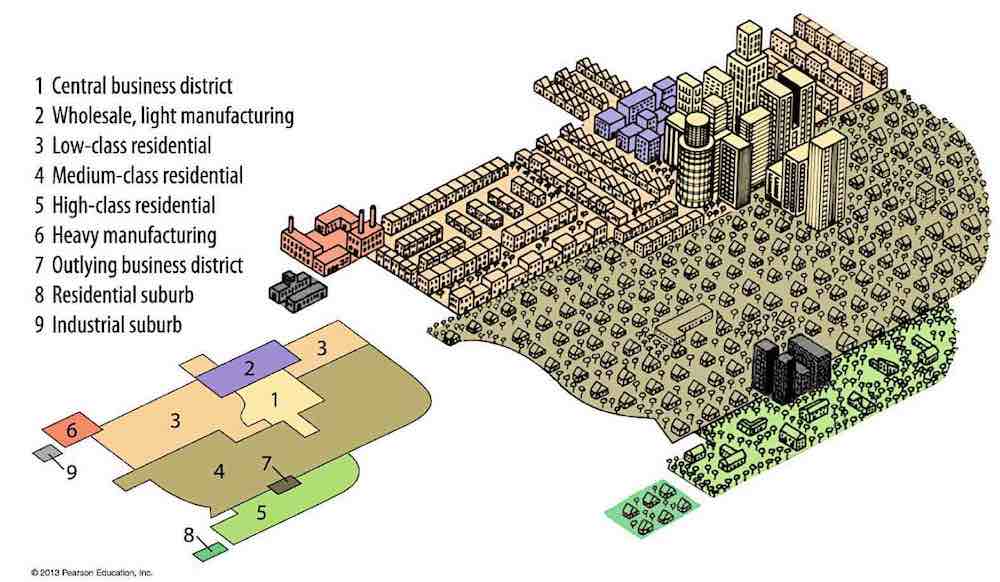
The Multiple Nuclei Model is a theory in urban and regional planning that was developed by geographers Chauncy Harris and Edward Ullman in 1945. The model suggests that cities are not organized around a single central business district (CBD) like the Concentric Zone Model proposes, but rather around multiple centers or nuclei of activities and development. These nuclei can attract and generate various functions, creating a more complex and decentralized urban structure. Here's an overview of the Multiple Nuclei Model:
Key Principles of the Multiple-Nuclei Model:
Multiple Centers: The model suggests that cities have multiple centers or nuclei that emerge and grow based on various factors, including economic activities, transportation networks, residential patterns, and historical development. These nuclei act as self-sustaining centers of activity.
Functional Differentiation: Each nucleus tends to have a specific function or set of functions associated with it. These functions can include commercial activities, industrial areas, educational and cultural institutions, residential clusters, recreational facilities, and transportation hubs. The spatial arrangement of these nuclei can vary within the city.
Interactions and Linkages: Nuclei within the city are connected and interact with each other through transportation networks, flows of people and goods, and social and economic relationships. The intensity of interactions and linkages between nuclei can depend on factors such as proximity, accessibility, and complementarity of functions.
Examples of Nuclei:
The Multiple Nuclei Model identifies various types of nuclei that can emerge within a city, depending on local conditions and historical development. Some examples include:
1. Central Business District (CBD): Similar to the Concentric Zone Model, the CBD can still exist as one of the nuclei, but it is not the sole dominant center. The CBD tends to have a concentration of offices, financial institutions, retail establishments, and other commercial activities.
2. Industrial Districts: Industrial areas can become nuclei of manufacturing, processing, or production activities. These districts may have specialized infrastructure, such as factories, warehouses, and transportation facilities, to support industrial operations.
3. University or Institutional Areas: Nuclei can form around universities, research institutions, and educational centers. These areas tend to have a concentration of educational facilities, student housing, research centers, and other related amenities.
4. Residential Clusters: Residential areas can act as nuclei, particularly if they have unique characteristics or cater to specific demographic groups. For example, gated communities, retirement communities, or ethnic enclaves can develop as distinct residential nuclei.
5. Recreational and Entertainment Centers: Nuclei can form around recreational and entertainment facilities, such as stadiums, parks, theaters, shopping malls, and cultural centers. These areas attract people for leisure, entertainment, and shopping activities.
The Multiple Nuclei Model acknowledges the complexity and diversity of urban areas, highlighting the importance of multiple centers and their interactions in shaping the urban structure. It helps planners and policymakers understand the spatial organization of cities and the functional differentiation of various nuclei, assisting in the development of more targeted and comprehensive urban and regional planning strategies.
- The multiple nuclei model is an economical model created by Harris and Edward Ullman in 1945
- This model describes the layout of a city, it is based on Chicago
- Modern cities are more complex than suggested by other theorists
- Each nucleus acts as a growth point
- Growth occurs outwards from each nucleus until they all merge into one large urban area
- It says even though a city may have begun with a CBD, it will have other smaller CBDs develop on the outskirts of the city
- If other CBDs develop on the outskirts of a city they would be around valuable housing areas to allow shorter commutes to the outskirts of the city
Reason for the Model
- Harris and Ullman argued that cities don't grow a single nucleus but several separate nuclei
- Each nucleus acts like a growth point
- The theory was formed based on the idea that people have greater movement due to increased car ownership
- This increase in movement allows for the specialization of regional centers
- The number of nuclei around which the city expands depends upon situational as well as historical factors Reasons for the Model Continued
Effects on Industry
- As multiple nuclei develop, certain types of transportation like airports are created
- Those allow industries to be established with a reduction in transportation cost
- These transportation hubs have negative effects
- Some effects are noise pollution and lower land values
- Hotels are also built around airports because people who travel want to be near their source of transportation
Placement of Classes
- Low Class: Low-class residential areas are closer to the manufacturing jobs which tend to be non-minimal skilled jobs. They also tend to have low wages which in turn leads to a low-class resident
- Medium Class: Medium-class residential area tends to be close to the CBD. It also has more space to spread out to support the population which are doing the skilled-labor jobs
- High Class: High-class residential areas tend to be on the outskirts of the medium-class residential area. The area is also touching the outlying business district. The jobs that the people in this district do are usually skilled labor and have high incomes.



